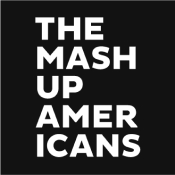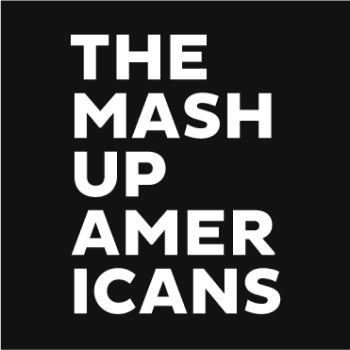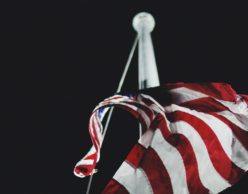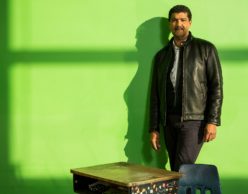How I Found My Way to Hapa

Being mixed race can make people look at you like you’re a unicorn. We’re the changing face of America! We have a racial passport to anywhere! We can also grow up confused, and challenged on our identity on every front. Is half ever enough? What standards do we have to meet in order to fit in? Our Korean-Brazilian-American Mash-Up Tanya Tarr shares with us her struggle for belonging, and her choice. We’re in.
The identity of a racially mixed person is a squishy place to live.
I never identified as a person of color until I was in my mid twenties. My mom is first-generation Korean-American, and my dad has Brazilian, Finnish, and Scottish ancestry. Though I grew up in a Korean Baptist Bible church outside of Washington, D.C., I never felt that I truly belonged in a Korean community.
To put it bluntly, Koreans are super group-oriented and can sometimes be unflinchingly xenophobic. An outsider is and often will remain an outsider. Among the church kids I grew up with, I was too tall. Too loud. Too fat, by Korean standards. I was nerdy but not nerdy enough to inhabit the rarified air of magnet school kids and Korean-level competition. I wasn’t captain of the mathlete team and my piano skills were not concert-ready.
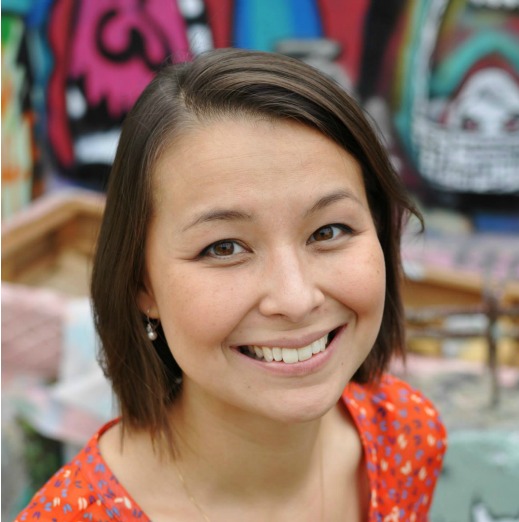
Neither of my parents ever made it a point to talk about race, except to say it was a bad idea to ever talk about it. This might seem an odd approach, since they had gotten together in the mid 1970s, at a time when interracial marriages were not commonplace or encouraged. My father’s coping mechanism was to simply identify as white. In general, their strategy was to downplay or ignore race, which left me in an unsettled place of limbo. I didn’t have a name.
I wasn’t white, but I didn’t fit anywhere else. So while my neighborhood in Silver Spring, Maryland was very racially and culturally diverse — some 40-plus languages other than English were spoken in the homes of my classmates — I still couldn’t find my tribe.
So, as a grown woman, I am now facing a critical question: Who am I?
I felt a deep need to belong somewhere, and only ever felt lost. So naturally I sought out groups that had nothing to do with racial identity: I became a theater geek, dabbled in cross country running, joined a Girl Scout troop, and despite not feeling fully accepted, was very active in my church youth group. After college, I found myself working on political campaigns with eclectic collaborators, many of whom were also theater geeks who grew up feeling isolated for one reason or another.
But in the last few months, particularly as frank conversations on race and privilege are a more vocal part of our national dialogue, it’s been impossible to avoid discussions of racial identity. Deep, raw interactions with my friends across the racial spectrum have caused me to process a topic that I was trained to avoid.
So, as a grown woman, I am now facing a critical question: Who am I, racially? Ethnically? Culturally?
Oof.
Is it what other people see in me? In cities, I find my ambiguous features invite curiosity or the desire to project a tribe on my mixed face. I have been mistaken for Russian, Uzbek, Uighur, Malay, Filipina, Inuit, Crow Nation, Hawaiian and Pakistani.
In less cosmopolitan places, the reaction is often to avoid eye contact entirely, or assume I am Mexican or Chinese.
But the ethnic-detective inside me desired something measureable, some form of hard, objective evidence that might authentically point to what I am, not just what people place on me.
The first data point involves cosmetics. Hear me out: When it comes to makeup, your actual complexion is a main focus. For years, I had been buying everything from drugstore to luxury blushers and bronzers in an attempt to look anything but ashen. Most purchases ended up in a shoebox. The colors might seem to match my skin tone in the store, and then under sunlight, I would look like a sunburned clown. This was not good.
On a recent trip to California, though, I forgot my makeup bag and found myself in front of a massive wall of options at a drug store. A makeup artist friend suggested I look for deep gold and yellow tones (not the bluish ones I had bought previously), and so I picked up a likely candidate. On the back was the name “Iman.” I also spotted an eyeliner next to a picture of Queen Latifah. I went home, put on the makeup and stared at the results.
My face looked healthy! I went to the grocery store and felt like I had entered a different dimension. Strangers smiled at me. The cashier flirted with me. I half expected a bird to fly down to my shoulder and sing to me on my way to the car. What was going on?
Turns out, I had finally found makeup that matched my skin tone. Iman makes a line of cosmetics specifically for women of color, as does Queen Latifah. I had inadvertently stumbled into the “ethnic” section of the makeup aisle, which I previously thought was just the domain of African American beauties. But these cosmetics were actually made for my tan/beige/olive/yellow skin tone. The makeup would indicate that — literally — I am a woman of colors that are not the same as my white sisters.
I am what I choose to be, not what or who chooses me.
The second data point is biological. For the last couple of years, I have been dealing with chronic health problems that are impossible to fully diagnose. Two years ago, one doctor suggested that perhaps I was dealing with adrenal fatigue and exhaustion. We experimented with elimination diets and supplements, including a radical removal of sugar and gluten. My health began to snap back into place, and my dress size shrank to a size 6. But we weren’t out of the woods — a routine blood test showed that I was prediabetic despite all evidence that I was getting healthy.
It made absolutely no sense to me until I stumbled on research done on only Asian Americans. Turns out, many Asian Americans run a significantly higher risk of diabetes due to insulin resistance. They are prediabetic while also having a healthy body-mass index. The root cause of this prevalent prediabetic state is still unknown, but diet and lifestyle does play in to it. This prediabetic tendency suggested that my internal biology was, in fact, more Asian than anything else.
I read recently that true power rests in claiming yourself regardless of other people’s opinions. I am what I choose to be, not what or who chooses me. As the data would suggest, perhaps I am more Asian than anything else. It shapes and contours my life. It has an effect on my health. In claiming my Asianness, I’m able to make better choices for myself, that fit me.
But my identity isn’t only defined by being Asian. When I got to college, I met people from Hawaii — people that looked like me, who also shared a mixed heritage. Their first question was: Are you hapa? I had no idea what hapa meant back then, but now I hope it might be the expandable label mixed kids are looking for.
This is the hidden gift in living a racially ambiguous life. We get to define what our multilayered nomenclature is, and make it as magical and multifaceted as we want. And though it’s nearly impossible for me to find someone of my exact blend, I have finally found my tribe.
I choose to be hapa, a label that can expand to include the multitudes I contain.
Who’s joining me?
Identity is hard. We get it.
